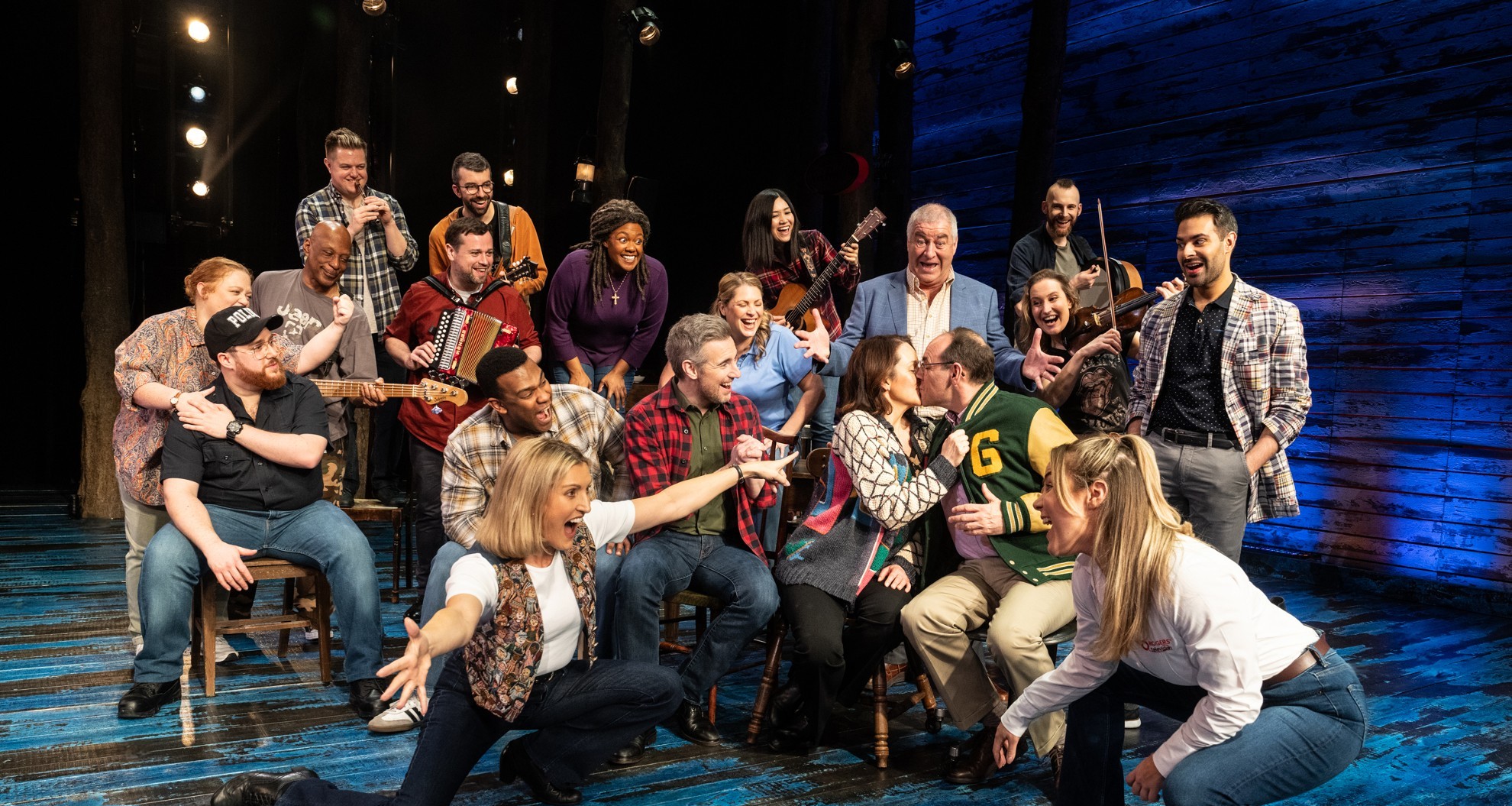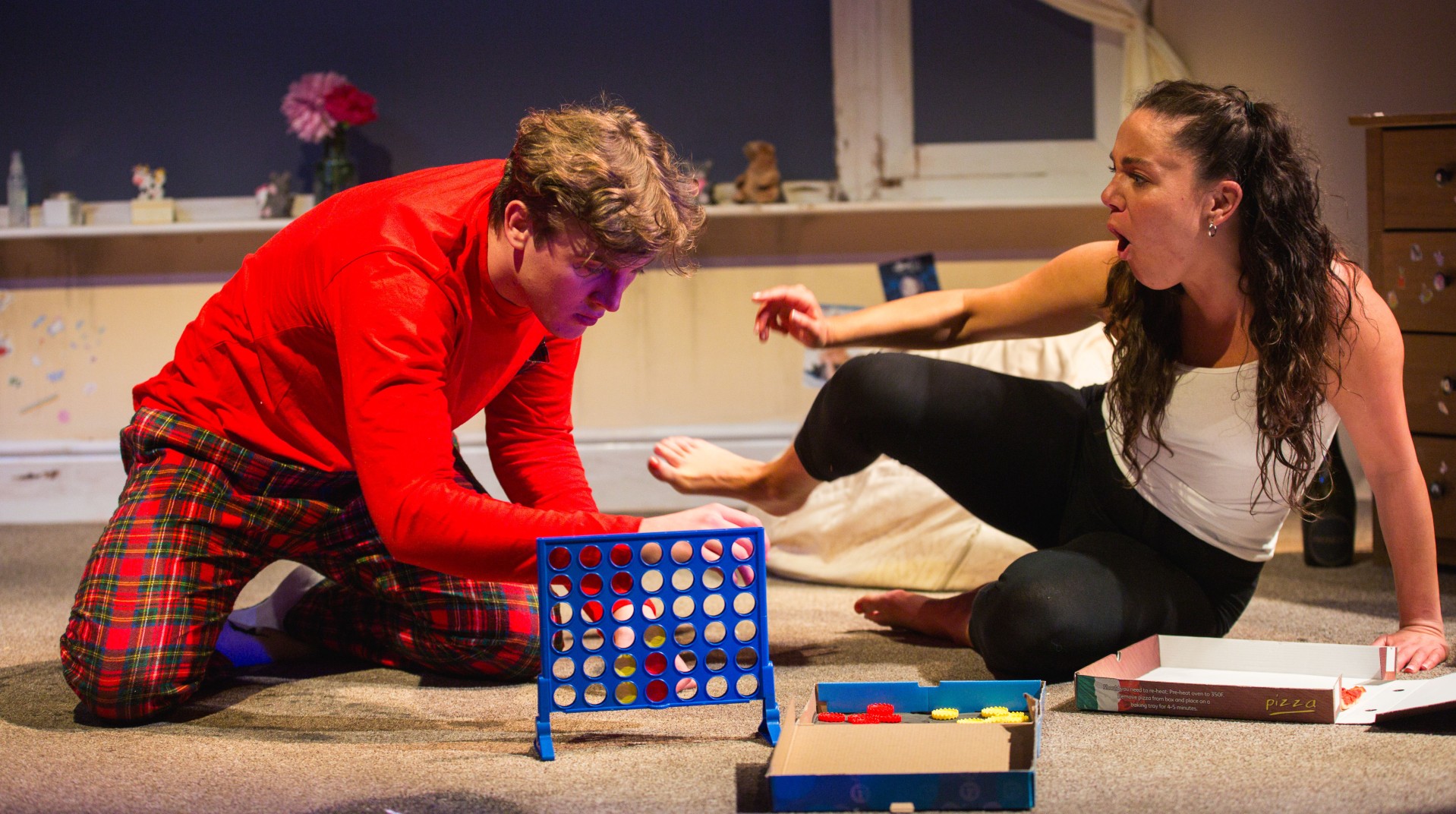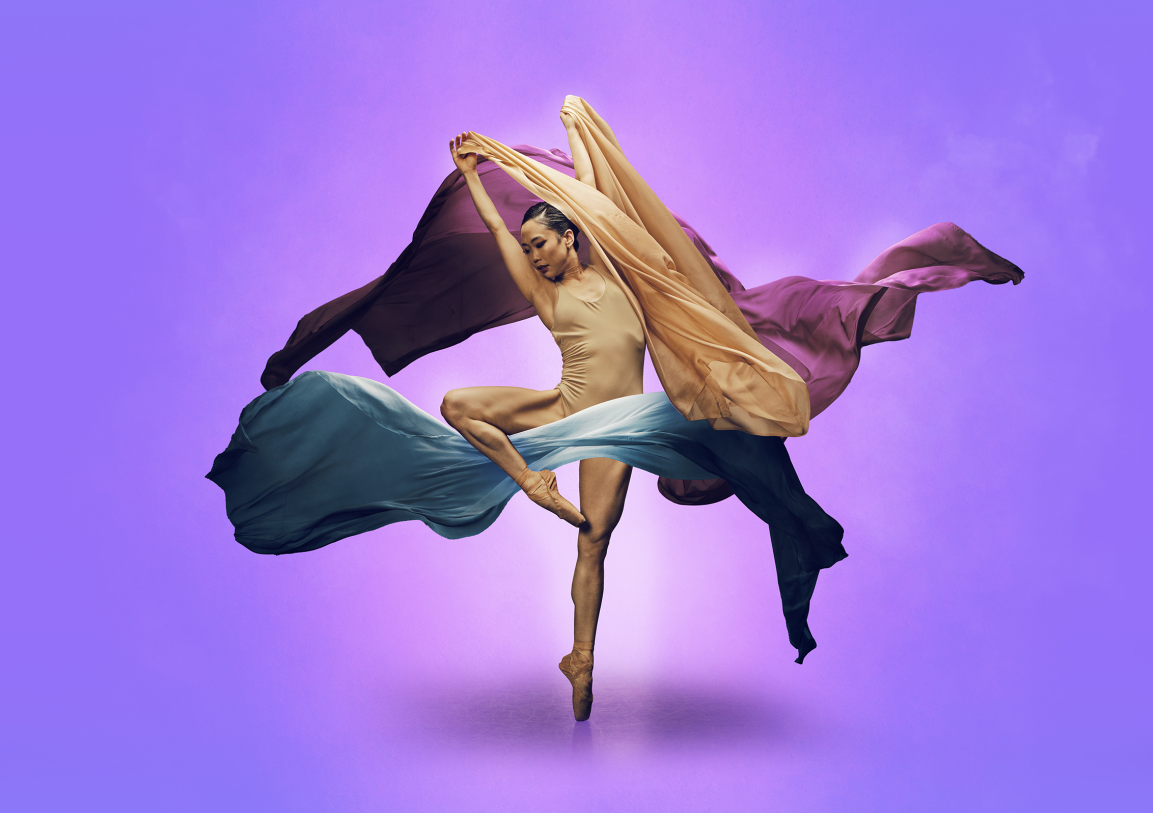The world premiere of The Enormous Crocodile is at Leeds Playhouse on 2 December until 6 January.
Ten puppet-makers spent three months creating twenty puppets for the Roald Dahl classic. Here, we bring you images from behind the scenes from puppetry designer Toby Olié’s workshop as the co-directors Toby and Emily Lim tell us about bringing The Enormous Crocodile to the stage.
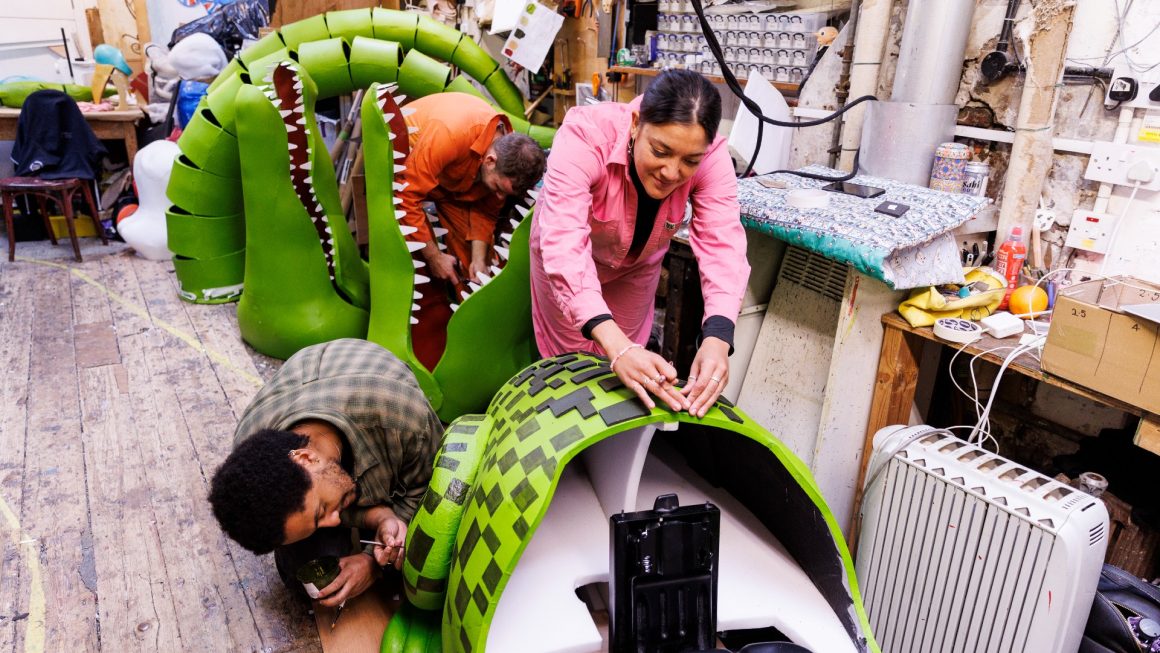
How did you come to decide on puppetry to tell the story?
Emily: We’ve been working on the show for almost five years. We definitely never thought it would take that long to adapt a very short picture book! It’s been an epic, gradual process of working out how to make the story live as a piece of musical theatre, honoring the original but being radical with new ideas where we felt it would help enhance the spirit and clarity of the material. We decided very early on that puppetry would give the children in the audience the most magical, fun experience of the jungle animals. Meeting Toby and his wild imagination was a real turning point in understanding how hilarious and inspiring this added dimension could be.

There must have been some challenges, not only in creating a new musical but also in developing the puppets.
Emily: It’s a really exciting new form for me bringing all these elements together. The puppets behave in a totally different way, of course, to human actors! So, finding the alchemy between our performers and their puppets in these early rehearsals has been an essential part of the process, and working out what the puppets can do. How do these puppets sing? How do these puppets groove? How does this one particular puppet bounce around on a trampoline? It’s been a lot of learning and our company are being amazing, juggling so many different skills, and committing all the songs and lines to memory as well as discovering all the different physical beats of each scene with their puppets.

Does working with puppets change the way you direct performers?
Toby: My aim is to direct a puppet like they are another performer in the room. Initially, there are technical challenges as the performers are learning how to operate their puppet and speak or sing through it, but once these new skills are embedded and their confidence grows, the performers can start to improvise and make offers as the puppet. It’s then that the characters feel like they’re their own presence in rehearsals.
Emily: It has to be a shared job between Toby and I – we need to work very closely to understand how best to tell each beat of the story. We’re essentially creating a visual score of the piece as we work through the text. It’s also, of course, a huge amount of fun – we’re laughing a lot in rehearsals as we watch people transform into everything from coconut trees to a giant curry pot.
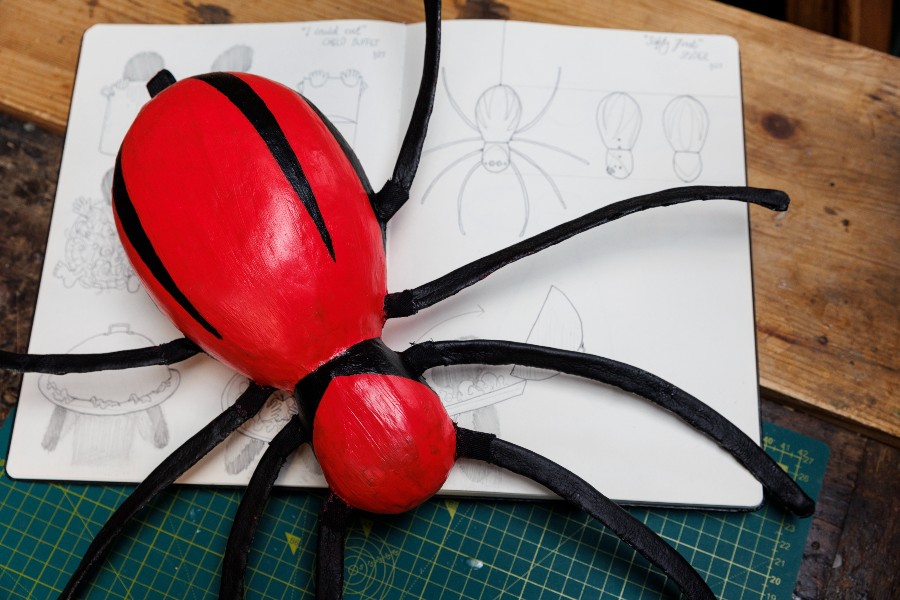
What is the process for making puppets?
Toby: I am a huge believer in trialling ideas for puppet designs in 3D as it is so hard to anticipate how certain materials or types of joints will behave. So, very early on, sometimes before I’ve even done a drawing, I’ll make a prototype. These are usually out of simple, everyday materials, but they immediately allow me to think about scale, the points of articulation and how/where the puppeteers will operate them. It is only once the form and its style of performance is decided that I think about aesthetics and any coverings or finishes. A puppet’s primary mode of communication is movement, so I never let the look of a puppet dictate or hinder its articulation.
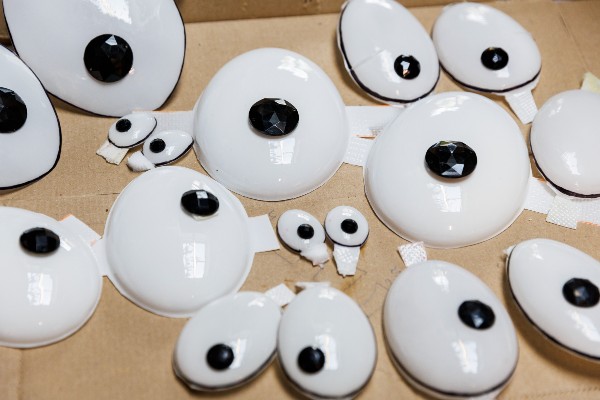
You must have a favourite puppet for the show?
Emily: I love them all, but there was a moment in one draft where we very nearly cut Humpy Rumpy as a character from the play, so I think I might say him! Oh, and the plate of carbonara – that’s a favourite!
Toby: Mine is definitely the Enormous Crocodile himself. The sheer scale and playfulness of how we portray the character onstage feels equal parts joyful and thrilling; and the initial idea of its design was really the bedrock for the entire show’s puppetry concept and how the performers would portray the animals.
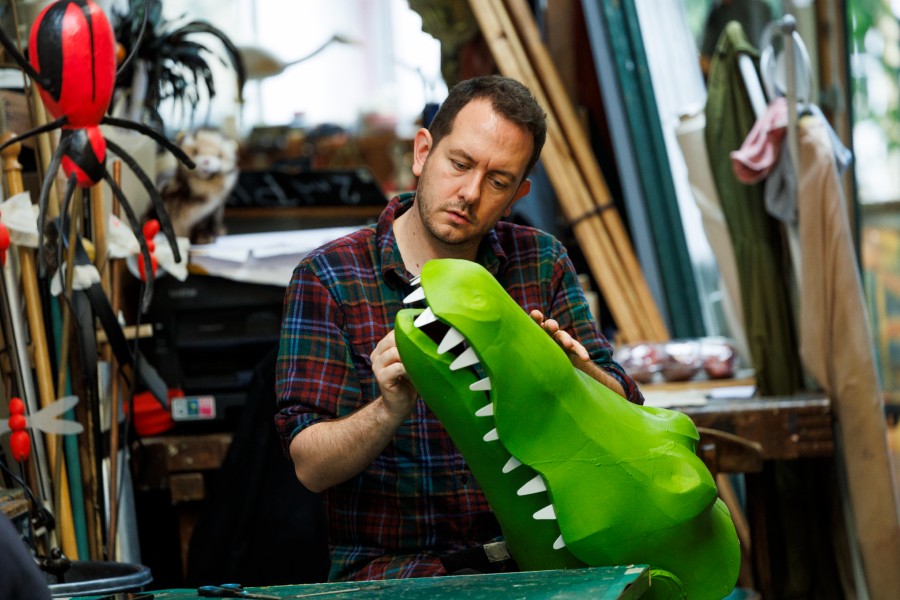
Do performers have to have different techniques for operating the puppets?
Toby: Each of the main animal characters is a completely different style of puppet and has its own way of being operated by the performers. All the designs utilise the performer’s body in one way or another to ‘complete’ the shape of their animal, so we’ve ended up with a very playful aesthetic where the audience can enjoy seeing the performers rather than them being hidden or remaining neutral.
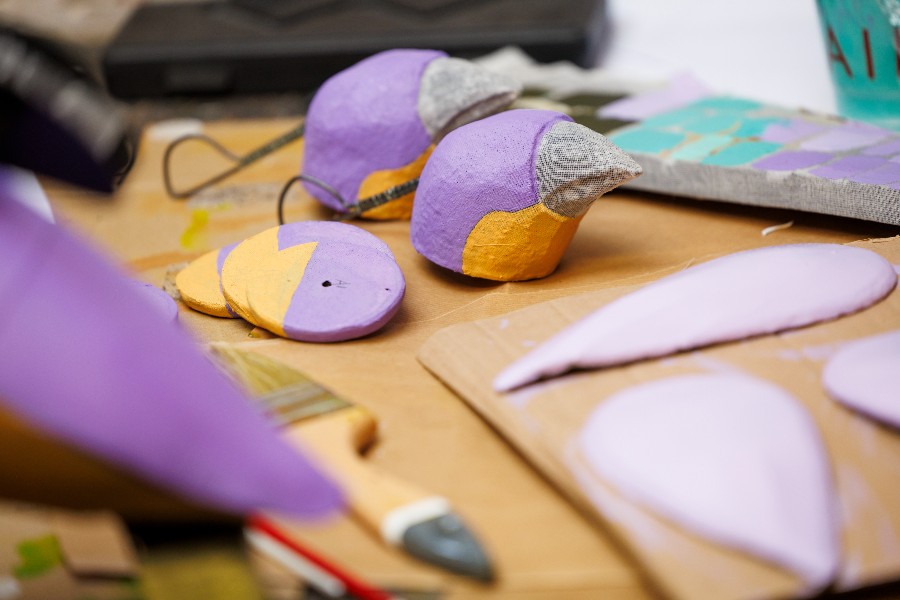
How do you help performers to give each puppet its own personality?
Toby: No matter the style or size of puppet, I always start with the basic principles of bringing something to life (emotions, physicality, etc.), and identify how these traits can be embodied or emulated in the puppet to its greatest effect. An audience fundamentally has to believe that a puppet is alive before they can care about it.

Do you have childhood memories of being captivated by a puppet?
Emily: I used to love watching shows like Greenclaus and The Riddlers as a child on TV. And as an adult I won’t ever forget the first time I saw the War Horse horses, which Toby puppeteered. I love how puppets transport us to different worlds and make all kinds of impossible things possible.
Toby: For me, seeing The Lion King stage musical as a teenager was a hugely formative experience. It was such an ambitious production that utilised many different types and scales of puppet. It was also incredible to see how awe-struck the audience was watching a show that uses very little stage trickery or technology; everything is very declared and human-powered. It really opened my eyes to how active an audience’s imagination is when watching puppetry. They not only ‘fill in the gaps’ to make something appear real or alive, but also enjoy the technique of how it’s being achieved at the same time.
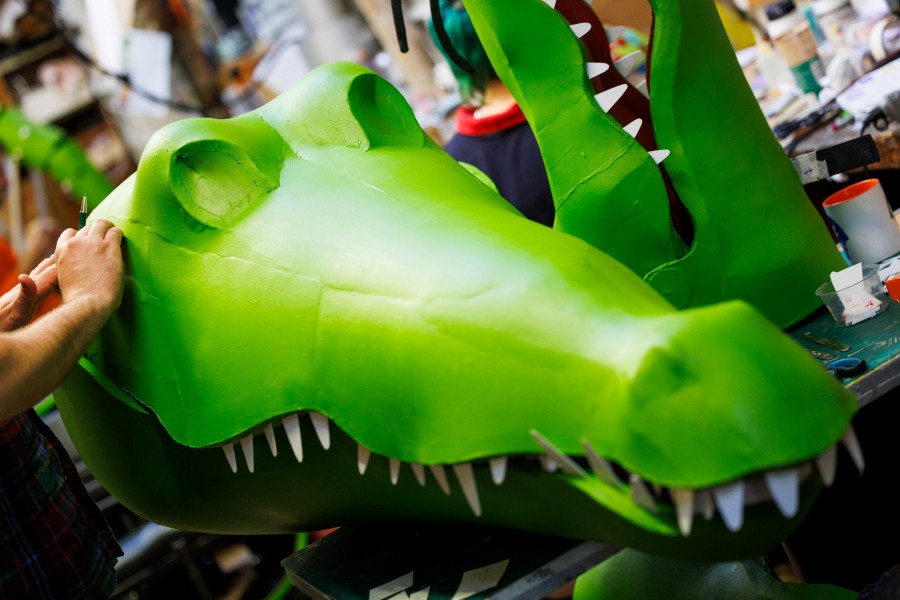
What reaction are you hoping for from the younger The Enormous Crocodile audience when they see the puppets for the first time?
Emily: I hope they get swept away in the magic of it all and enjoy believing that there might be a real crocodile onstage whilst also seeing a group of grown-ups having a great time running riot! We want them to be on the edge of their seats in the right way, leaning into the story. Suhayla (El-Bushra, Book and Lyrics) has always said that children should feel just the right balance of fear and excitement. I think we’re aiming for the sweet spot between those two emotions.
Toby: I hope they connect with the puppets’ sense of fun and play so much that they’re straining in their seats to rush onstage and get involved… although constant audience participation could get somewhat distracting!
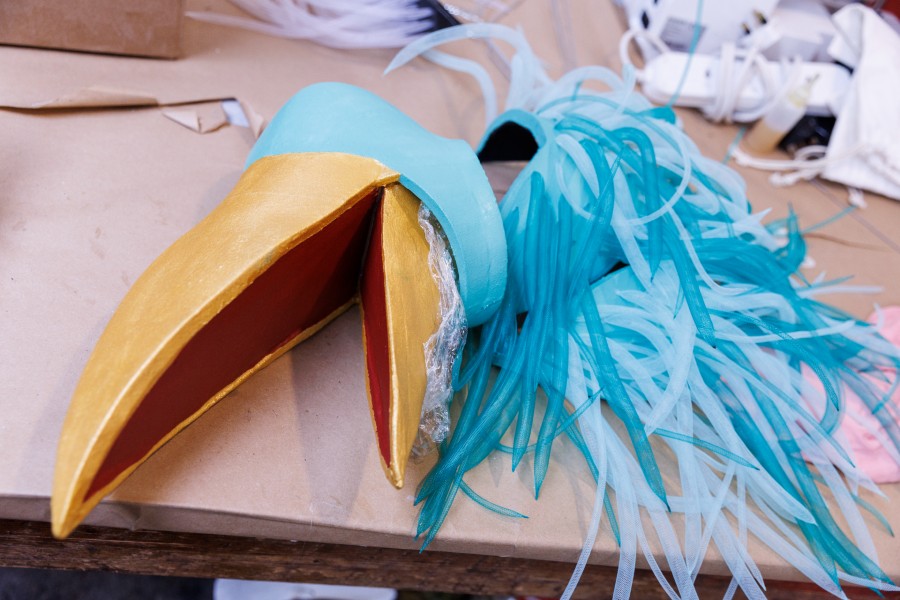
We seem to have a particular affinity with puppets on stage. Why do you think this is?
Emily: Puppets allow us to see things in totally new ways. We know there isn’t a physical crocodile on stage but the puppets collude with our brains to make us think there is. So, we ‘see’ a crocodile, even though we can’t see a crocodile! It’s the most perfect example of theatre magic and the power of imagination. As an audience, we get to be in cahoots with the actors; it’s as if we’re all playing the same game – and that’s a really satisfying, exciting experience.
Toby: Because puppets use such a large amount of an audience’s imagination, I think we perceive and interpret them very individually. Quite often you can watch a puppet do something very ordinary or every day, like lift something heavy, take a shocked intake of breath, or look at something lovingly, and it’s as though we’re seeing it for the first time. When puppets are grounded in our reality, we can’t help but apply our own experiences and emotions to their actions or gestures.
When did your own puppet-making begin?
Toby: I was six and in my dinosaur phase (now, aged 38, I am arguably still in this phase), and I remember seeing a ‘How to make puppets’ book in my school’s library with an amazing dinosaur puppet on the cover. I took the book home and immediately asked my parents to help me round up the materials to make it: an egg box, bottle tops and a woollen sleeve from an old jumper. This then ultimately spiralled into my family saving any ‘useful’ bits of cardboard or fabric for future creations.

At what point did you realise you wanted to be a puppet designer and director?
Toby: Having studied both art and drama at school, puppetry felt like such a natural meeting point for these mediums, so I started looking at theatre design degree courses with puppetry modules. It was then I discovered an entire puppetry degree course (now sadly not running) at the Royal Central School of Speech and Drama, which I was lucky enough to get onto. The course really equipped me as a theatre-maker as well as performer, so I knew very early on after graduating that I wanted to make my own work as well as puppeteer.
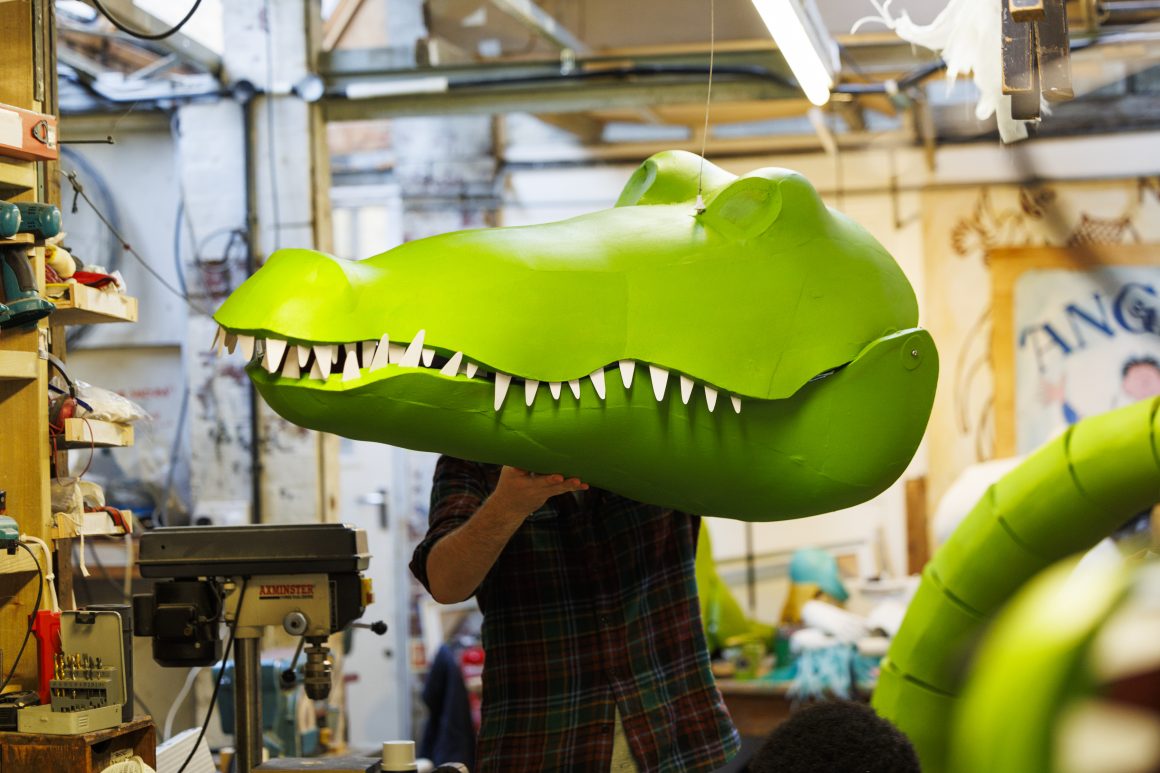
What advice would you give to children who’d like to try their hand at making their first puppet?
Toby: Just give it a go. Don’t be intimated by what you do or don’t know, or what materials you may or may not have at hand. There isn’t a huge puppet-making rule book; a puppet can be as simple as a piece of scrunched up paper or a folded tea towel, it’s about playing around with how the material or object can show signs of life and invite an audience into its story. Less is always more with puppets, so start small and see where your imagination leads you.
The Enormous Crocodile, co-produced by Roald Dahl Story Company, Leeds Playhouse and Regent’s Park Open Air Theatre, is a joyous musical based on Roald Dahl’s wickedly funny and wildly popular original story that will bring instantly unforgettable music, world-class puppetry and enormous fun to audiences in Leeds from this winter and at Regent’s Park London in summer 2024.
LISTINGS INFORMATION
A Roald Dahl Story Company, Leeds Playhouse and Regent’s Park Open Air Theatre co-production
The Enormous Crocodile
by Roald Dahl
Courtyard, Leeds Playhouse
Age guide 4+
50 minutes (no interval)
2 December – 6 January
Box office: 0113 213 7700
Photography by Ellie Kurttz.

